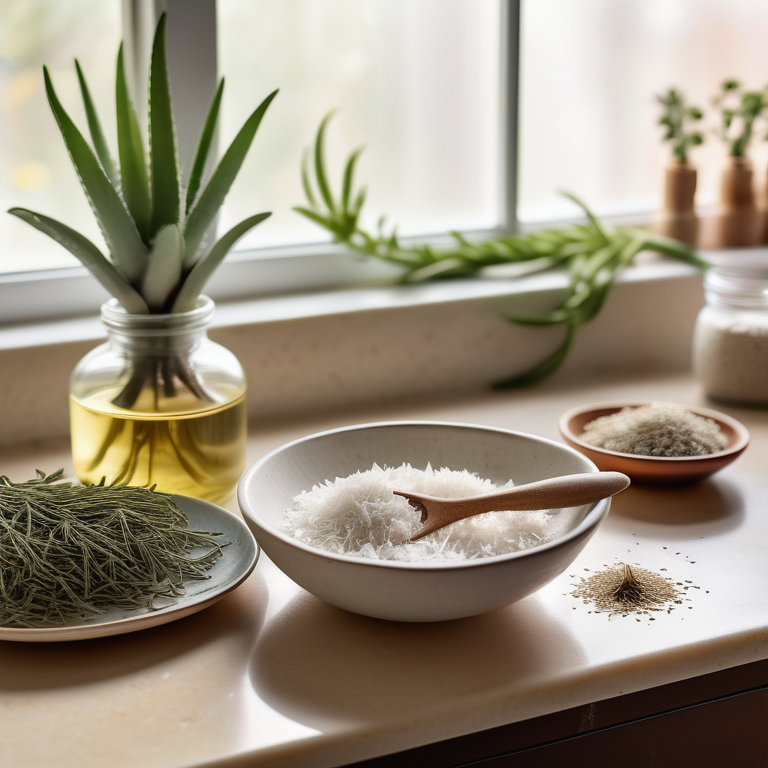Key Highlights
- Recent studies have revealed the presence of heavy metals like arsenic, lead, mercury, and cadmium in a variety of baby food products.
- These toxic metals can pose significant risks to infants and toddlers, potentially affecting their neurological development.
- The source of contamination can be from the environment or human activities like mining and pesticide use.
- Parents and caregivers need to be aware of the potential dangers and take steps to minimize exposure.
- Choosing a variety of foods, opting for homemade options, and advocating for stricter regulations are crucial in safeguarding children's health.
Introduction
Many parents are worried about toxic metals in baby food. These metals are found naturally in the environment. However, when they are in food, especially in infant formula, they can harm a child’s developing brain. This article will look at this problem. We will talk about what it means and help parents by giving them information and tips to make safer choices for their babies.
The Reality of Metals in Baby Food
Recent research has shown that there are dangerous heavy metals in baby food. This issue was revealed by studies from consumer groups, public health organizations, and government agencies. These studies point out the health risks that these metals bring.
Finding these metals in food for babies has raised a lot of concern. It has led to calls for quick action. Parents now have a tough job of choosing products that seem safe and nutritious but may actually hide risks.
Understanding the Types of Metals Found
Heavy metals are elements that can be harmful, especially in baby food. The main ones causing worry are lead, arsenic, cadmium, and mercury. These metals have been found in different baby food products, including popular ones like rice cereal. The amount of heavy metals can change based on things like the kind of food, the soil it grows in, and how it is made.
Inorganic arsenic is a type of arsenic that is especially worrying. It has been found in rice products. This happens because rice easily takes in arsenic from the soil and water it's grown in. The presence of inorganic arsenic in baby food, like rice cereal, is a serious issue because it might affect a child’s growth and learning.
It's important to know what metals are in baby food, where they come from, and how they can affect health. This knowledge helps parents make smart choices for their children.
How Metals End Up in Baby Food
Heavy metals can be found in baby food products due to natural and human causes. Environmental contaminants, which include heavy metals that occur naturally in soil and water, can be absorbed by plants and animals. This process eventually leads to these metals entering the food chain.
Some crops, especially rice, are known to collect higher levels of heavy metals like arsenic. Because of this, rice-based products, such as rice puffs, often contain higher levels of arsenic compared to other baby food products.
Additionally, human actions such as mining, pollution from industries, and the use of pesticides add to the levels of heavy metals in the environment.
The Impact of Metals on Infant Health
Heavy metals can be very harmful, especially for young children. Their bodies are still growing, so they are more at risk from the toxic effects of these metals. This exposure can harm their growth and development.
Being around heavy metals can cause serious problems right away or over time. It can affect different parts of the body and may even cause lasting damage.
Short-term Effects of Metal Exposure
Toxic metal exposure can show up in young children with different symptoms. These symptoms can look like common sicknesses that kids often get. For example, digestive problems such as nausea, vomiting, and diarrhea are frequent. Many people may think these are just stomach bugs or food issues.
Sometimes, young children may also have changes in behavior. They might become irritable, tired, or have trouble concentrating. While these signs do not always mean there is heavy metal exposure, they are still important. It is best to talk to a healthcare professional about these symptoms.
Fruit juice is often seen as a healthy drink for kids. However, some types have heavy metals, especially apple juice and grape juice. To be safer, it is better to limit juice and choose whole fruits instead.
Long-term Consequences for Development
The biggest worry about too much heavy metal exposure in babies and young kids is how it can hurt brain development. Research shows that being around heavy metals can cause delays in growth, learning issues, and behavior problems as they grow older.
Even small amounts of exposure, especially at key times when the brain is growing, can have long-lasting effects on how the mind works. Since brown rice, a food that many think is healthy, often has more arsenic in it, we should be careful about how much we give to kids and look for other options.
To keep a developing brain safe from heavy metals, we need to take a comprehensive approach. This means reducing exposure from all types of sources, not just the food they eat.
Identifying High-Risk Foods
Some foods have more heavy metals because of how they are grown or made. Knowing which foods are risky can help parents choose better options and lower their child's exposure.
The first step is to find out which foods to avoid. It's important to know that you might not be able to cut these foods out completely. But eating less of them and providing other options can really help.
Common Foods with Higher Metal Concentrations
- Rice Products: Brown rice has high levels of arsenic. This also includes rice cereals, rice puffs, and brown rice syrup.
- Certain Fruits and Vegetables: Root vegetables such as carrots and sweet potatoes, along with grape juice, have higher amounts of heavy metals.
- Fish: Fish is a good source of protein and omega-3 fatty acids. However, some types like tuna, swordfish, and king mackerel have more mercury.
Keep in mind that these foods have health benefits. So, you do not have to remove them completely. Instead, try to have a mix, eat in moderation, and find alternatives.
Organic vs. Non-Organic: Is There a Difference?
Parents often choose organic baby food because they think it is safer and healthier. However, when looking at heavy metals, both organic and non-organic foods can have similar contamination levels. This happens mainly because of environmental sources.
Even though organic farming reduces the use of pesticides, it doesn't solve the problem of heavy metals found in the soil and water. The Clean Label Project is a non-profit group that tests food products, including baby food. Their results often show heavy metals in both organic and non-organic baby food products.
This shows that we need better testing and rules for all baby food, no matter if it is organic or not.
Preventative Measures for Parents
It's a big worry that baby food can have heavy metals in it. But there are ways parents can help lower their child's risk. By learning more and using simple tips, parents can do a lot to protect their child's health.
This means knowing which foods are more risky and pushing for better rules on food safety. Every step helps make a safer space for children to eat.
Safe Food Preparation and Handling
Proper food preparation and handling are very important to reduce heavy metal exposure. When making baby food at home, wash your hands well and keep utensils clean.
If you use tap water for making formula or baby food, think about getting it tested for lead and other harmful substances. If you're worried, you can use filtered or bottled water that is safe for infants.
Make sure to wash and peel fruits and vegetables thoroughly. This is especially important for those that can have higher levels of heavy metals. Whenever you can, choose fresh, whole foods instead of processed ones. Processing can sometimes make heavy metals more concentrated.
Strategies for Minimizing Metal Exposure
- One good way to reduce heavy metal exposure is to eat a variety of foods. Don't just stick to one type of food or brand. Include different grains, fruits, vegetables, and protein sources. This helps you get the essential nutrients you need.
- Making homemade baby food gives you better control over what goes in it. You can choose fresh, whole foods while skipping added sugars, salt, and preservatives that are often in store-bought baby food.
- It’s also important to stay updated on advisories, recalls, and new tips from reliable health groups like the American Academy of Pediatrics (AAP). This way, parents can make smart choices.
Legislative Actions and Industry Standards
Regulatory groups and lawmakers know that heavy metals in baby food can be risky. They are now working to solve this problem. It is very important to make stricter rules about heavy metal levels in baby food to keep our babies safe.
They want to set limits, improve testing, and make labeling clearer. Yet, there is still a lot more to do to make sure the food we give to our most at-risk little ones meets very high safety standards.
Current Regulations on Metals in Baby Food
The US Food and Drug Administration (FDA) is very important for keeping our food safe. They set rules about how much of certain contaminants, like heavy metals, can be in baby food. These rules tell us the highest amounts of these harmful substances that are allowed in food.
In 2021, the FDA started a plan called "Closer to Zero." This plan is meant to help lower the amount of heavy metals that babies and young children are exposed to. The goal is to set safe levels for metals like lead, arsenic, cadmium, and mercury in baby food.
Some people say the FDA isn't acting quickly enough to protect our kids. Still, they have shared draft guidelines about lead levels in baby food. They also plan to deal with other heavy metals in the future.
|
Heavy Metal |
Draft Guidance Action Level |
|
Lead |
10-20 parts per billion (ppb) |
Efforts to Tighten Safety Standards
Many groups and advocates see the urgent need to protect babies from heavy metal exposure. They want stricter safety standards. The American Academy of Pediatrics (AAP) has strongly encouraged the FDA to put in place tougher limits on heavy metals in baby food.
They point out that even small amounts of these toxins can harm a child's developing brain and health. Following the AAP's ideas, consumer groups and lawmakers are asking for required testing, clear labeling, and a big drop in acceptable levels of heavy metals in baby food.
These actions aim to hold producers responsible, help parents get the information they need to make safe choices, and create a safer food environment for kids.
Alternatives to Commercial Baby Food
Parents may feel stressed when dealing with store-bought baby food. The good news is that there are better options. Homemade baby food can give parents peace of mind. It ensures safe and healthy meals for their children.
By making baby food at home, parents can control the ingredients. They can also choose how to prepare it, making it a more natural choice that might have fewer contaminants.
Making Homemade Baby Food Safely
Making your own baby food can be a fun and empowering choice for parents. It gives you control over what goes into your baby's food. You can use fresh ingredients and decide how to prepare the meals. This way, healthy babies can get the best start in life. It is important to choose a wide variety of fresh, whole foods.
Many resources are out there to help parents make their own baby food. You can find books, websites, and mobile apps that offer baby food recipes and tips. These make it easy for anyone to start.
Always remember to talk to your pediatrician or a nutrition expert. They can give you personalized advice on when to start solid foods and how to create a balanced diet for your baby.
Recommended Foods to Use
When making homemade baby food, pick ingredients that are good for health and low in heavy metals. Butternut squash is a perfect choice because it has Vitamin A, Vitamin C, and fiber.
Green beans are also a great option. They have important vitamins and minerals. You can easily steam and blend them. Trying different flavors and textures early helps babies explore their taste.
Peanut butter offers protein and healthy fats. Make sure to choose a brand without added sugar, salt, or preservatives. Always start with a small amount of peanut butter to check for allergies.
When to Consult a Pediatrician
If you think your child might have been exposed to heavy metals from food or other sources, you should get medical help right away. Finding out early can help reduce any health risks.
A pediatrician can look at the situation, run tests if needed, and give advice on how to manage and lower further exposure.
Signs of Possible Heavy Metal Exposure
Heavy metal poisoning can show up in different ways. It often looks like common sicknesses that children have, which can make it hard to identify just by looking at symptoms. However, some signs should make you seek help from a doctor.
Ongoing stomach issues like nausea, vomiting, constipation, or diarrhea are important to note, especially if your child is losing their appetite. This could mean they are around heavy metal exposure.
Also, watch for signs of developmental delays. This includes delayed speech, trouble focusing, or having learning problems. Keep in mind that the amount of heavy metals in toddler foods can change a lot. It is important to check what your child eats and to keep an eye on how they feel overall.
Testing and Treatment Options
If a doctor thinks a child might have been exposed to heavy metals, they may suggest blood or urine tests. These tests check how much of specific metals are in the child’s body. They help figure out how much exposure there is and what treatment the child may need.
To treat heavy metal poisoning, doctors usually recommend removing the source of exposure. In serious cases, they use chelation therapy. This treatment helps remove heavy metals from the body.
To lower exposure, you can avoid high-risk foods. For example, limit certain types of rice, especially brown rice. Instead, you can choose sushi rice or white rice. Also, think about using almond milk or oat milk instead of rice milk to reduce arsenic intake.
Conclusion
In conclusion, knowing about metals in baby food is very important for the health and growth of infants. It's helpful to learn about the types of metals, how they can affect health, and ways to reduce exposure. This helps parents make better choices. By using safe food handling methods, cutting back on foods that are high in risk, and considering homemade alternatives, parents can protect their child's health. Laws and rules from the industry are also important to keep baby food products safe. If you worry about heavy metal exposure, it's a good idea to talk to a pediatrician for advice and testing. Focusing on safe feeding practices is key to giving your little one a healthy start.
Frequently Asked Questions
How can I test baby food for metals at home?
You cannot test for heavy metals at home. If you are worried about heavy metal exposure from brown rice syrup, tap water, rice cereal, or other baby foods, think about changing brands or making your own.
Are certain brands safer than others?
The Clean Label Project checks baby food products for heavy metals. Some brands often have lower levels. It's important to stay updated, because things might change.
How do you know if your child has heavy metals?
Heavy metal exposure symptoms in young children are usually unclear. If you think your child has been near toxic metals, reach out to your pediatrician. They might have tests to check if it is needed.



